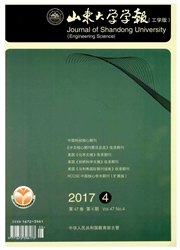

 中文摘要:
中文摘要:
以成分相对简单的轻质油(V(石油醚):V(苯)=9:1)作为模拟油取代成分复杂的原油配制模拟采出水,详细探究了驱油剂影响聚合物/表面活性剂二元复合驱采出水乳化稳定性的机理。采用超低界面张力仪、Zeta电位分析仪和界面流变仪对油水界面张力、油滴表面Zeta电位和油水界面流变进行测定,研究了部分水解聚丙烯酰胺(HPAM,聚合物)、石油磺酸盐(WPS,表面活性剂)和矿化度对模拟采出水油水分离性能的影响。研究结果表明:WPS能够降低油水界面张力,使模拟采出水更加稳定。HPAM能够增加模拟采出水体相黏度,但对其最终乳化稳定性影响较小。矿化度增加显著增强了模拟采出水乳化稳定性,从而为进一步加深对采出水乳化稳定性的研究提供借鉴。
 英文摘要:
英文摘要:
The mechanism of oil-displacing agent for the emulsion stability of polymer/surfactant produced water was stud- ied in detail by preparing the simulated polymer/surfactant flooding produced water with light oil ( V (petroleum ether) : V (benzene) =9:1 ), which had a comparatively simple component instead of crude oil with complex component. The interfacial tension, Zeta potential of oil droplets and the rheology of oil-water interface were investigated by spinning drop inferface tensiometer, Zeta potential analyzer and surface rheology analyzer. The effects of WPS ( petroleum sul- fonate), HPAM (partially hydrolyzed polyacrylamide)and salinity on oil-water separation were studied. The results showed that WPS could reduce the interfacial tension and enhance the stability of produced water. With the concentration of HPAM increasing, the bulk phase viscosity increased, which had little effects on final emulsion stability. The in- creasing salinity could greatly enhance the stability of produced water, which could provide reference for the study of e- mulsion stability of produced water.
 同期刊论文项目
同期刊论文项目
 同项目期刊论文
同项目期刊论文
 Effect of sodium-montmorillonite particles on the stability of oil droplets in produced water from a
Effect of sodium-montmorillonite particles on the stability of oil droplets in produced water from a Effect of Na-montmorillonite particles on the stability of oil droplets in produced water from alkal
Effect of Na-montmorillonite particles on the stability of oil droplets in produced water from alkal Adsorption properties of dodecylsulfate-intercalated layered doublehydroxide for various dyes in wat
Adsorption properties of dodecylsulfate-intercalated layered doublehydroxide for various dyes in wat 期刊信息
期刊信息
